Ant infestations are a common nuisance faced by homeowners and businesses alike. These tiny invaders can easily find their way into living spaces, creating unsightly trails and contaminating food sources. Traditional ant control methods often fall short of providing a long-lasting solution, making the need for effective ant control methods paramount.
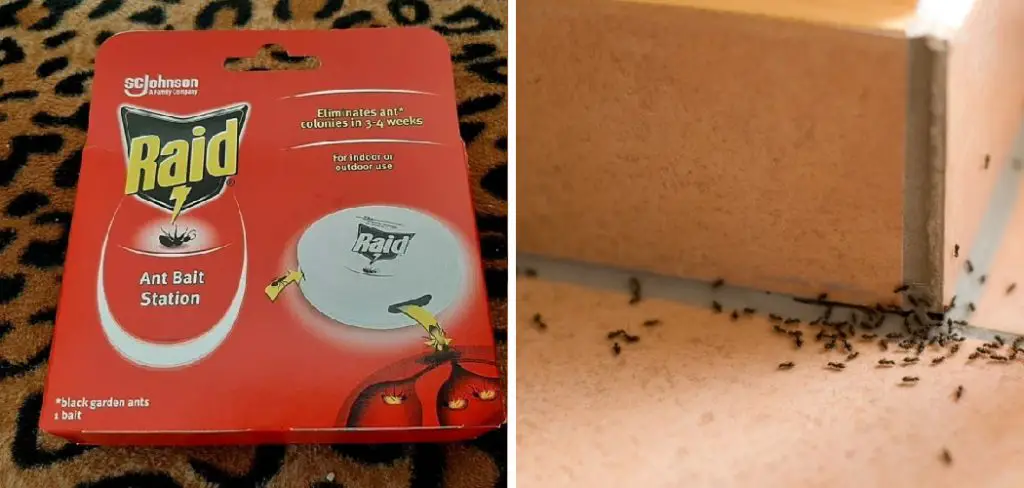
Raid Ant Baits have emerged as a popular and reliable option for tackling this problem. Using bait and poison, these products attract and eliminate ants, including the queen and the entire colony. The purpose of this article is to provide a comprehensive guide on how to use Raid Ant Baits effectively.
Readers can achieve long-term ant control and maintain a pest-free environment by understanding the proper application and monitoring techniques. This guide will equip you with the necessary knowledge on how to use Raid Ant Baits for optimal results.
Understanding Raid Ant Baits
Description of Raid Ant Baits:
Raid Ant Baits exploit ants’ natural foraging behavior. These baits combine food attractants with a slow-acting poison. Worker ants are lured by the bait, which they carry back to their colony, subsequently feeding it to the queen and other colony members. This method ensures that not only the foraging ants are killed, but the entire colony is eradicated from within, providing a comprehensive solution to ant infestations.
Types of Raid Ant Baits Available:
Raid offers a variety of ant bait formulations tailored to different needs. Gel baits are perfect for cracks and crevices, offering flexibility in placement. Solid baits provide an easy-to-handle solution that can be placed in discrete locations around the home. Bait stations, which encapsulate the bait within a protective housing, are ideal for both indoor and outdoor applications, ensuring that pets and children cannot easily access the poison.
Benefits of Using Raid Ant Baits:
Using Raid Ant Baits presents numerous advantages. The targeted nature of these baits ensures that the queen and colony are destroyed, greatly reducing the chances of re-infestation. Additionally, these baits are user-friendly and designed for versatile use, whether inside homes or in outside areas like gardens and patios.
This convenience and the product’s effectiveness make Raid Ant Baits a go-to solution for anyone facing persistent ant problems.
Identifying Ant Trails and Entry Points
Observing Ant Behavior:
Understanding ant behavior is crucial for effectively placing Raid Ant Baits. Begin by observing the ants’ movement patterns.

Ants typically travel in well-defined trails between their nest and food sources. Look out for lines of ants moving steadfastly along walls, countertops, or floors. Early mornings and late afternoons are prime times for spotting these trails, as ants are often more active.
Finding Entry Points:
Next, trace the ant trails back to their origin to locate their entry points into your home or building. Common entry points include cracks in the foundation, gaps around windows or doors, and spaces around utility lines or pipes.
Pay close attention to these areas, as they can provide valuable clues to where ants are getting inside. In some cases, ants may also enter through smaller, less obvious openings such as vents or weep holes.
Marking Trails and Entry Points:
Once you have identified the ant trails and entry points, mark these areas for targeted bait placement. Use small pieces of tape, sticky notes, or a non-permanent marker to outline the trails and highlight entry points.
This practice will help ensure that your Raid Ant Baits are placed strategically along the active trails and near entry points, maximizing their effectiveness. By carefully monitoring and marking ant activity, you can achieve a more precise and efficient ant control strategy, ultimately leading to the successful elimination of the ant infestation.
Preparing the Area for Bait Placement
Cleaning the Area:
Before placing Raid Ant Baits, it is essential to clean the area thoroughly. This step involves wiping down surfaces to remove any food residues, crumbs, or spills that could attract ants away from the bait. Use a mild detergent and warm water to clean countertops, floors, and other areas where ants have been observed.
By eliminating competing food sources, you ensure that the ants are more likely to be drawn to the bait, increasing the effectiveness of the Raid Ant Baits. Additionally, removing food residues helps prevent further infestations and maintains a hygienic environment.
Creating a Clear Path:
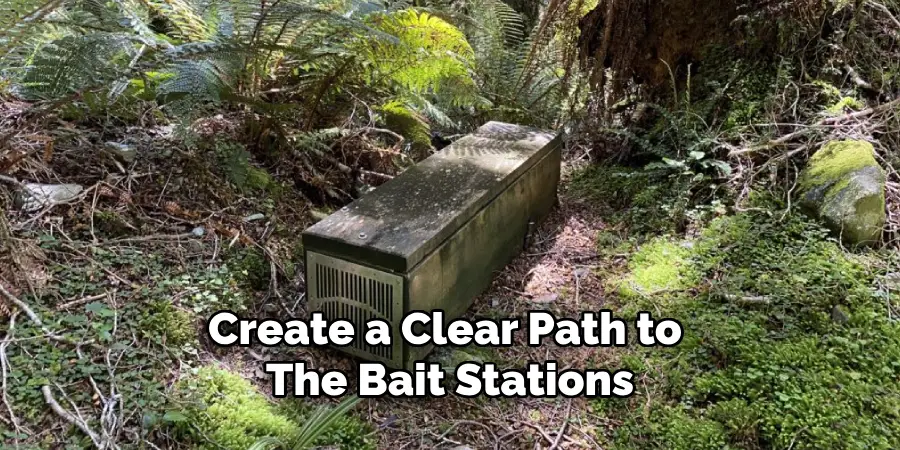
Once the area is clean, it is important to create a clear path to the bait stations. Ants are more likely to approach the bait if there are no obstacles in their way. Remove any objects, debris, or clutter that could block the ants’ access to the bait stations. Ensuring a clear path will allow ants to easily discover the bait and transport it back to their colony. This step is crucial for maximizing the reach and impact of the Raid Ant Baits.
Setting up Bait Stations:
To set up the bait stations effectively, place them in high-traffic areas where you have observed significant ant activity. Ideal locations include along ant trails, near entry points, and close to food sources that ants have been targeting. Position the bait stations directly in the ants’ path so they can quickly find and access the bait.
For optimal results, multiple bait stations should be distributed in various strategic locations to cover a wider area and target different sections of the ant colony. Regularly monitor the bait stations and replenish them as needed to maintain continuous ant control.
How to Use Raid Ant Baits: 4 Tips to Follow
01.Choosing the Right Bait:
Selecting the appropriate Raid Ant Bait product is critical to addressing the specific type of ant infestation you are facing. Identify the ant species, as certain baits are more effective for specific types.
For example, sweet-eating ants may be more attracted to sugar-based baits, while protein-eating ants may prefer grease-based formulas. Raid offers a variety of products designed to target different ant species, including gel baits, solid baits, and bait stations. Choose a recommended product for the type of ants you are dealing with to ensure maximum effectiveness.
02.Placement Instructions:
After choosing the right Raid Ant Bait, placing the bait stations correctly is essential to ensure they are accessible to the ants. For indoor placement, focus on areas where you have observed ant activity, such as along ant trails, near entry points, behind appliances, and under cabinets. Make sure the bait stations are positioned directly in the ants’ established paths.
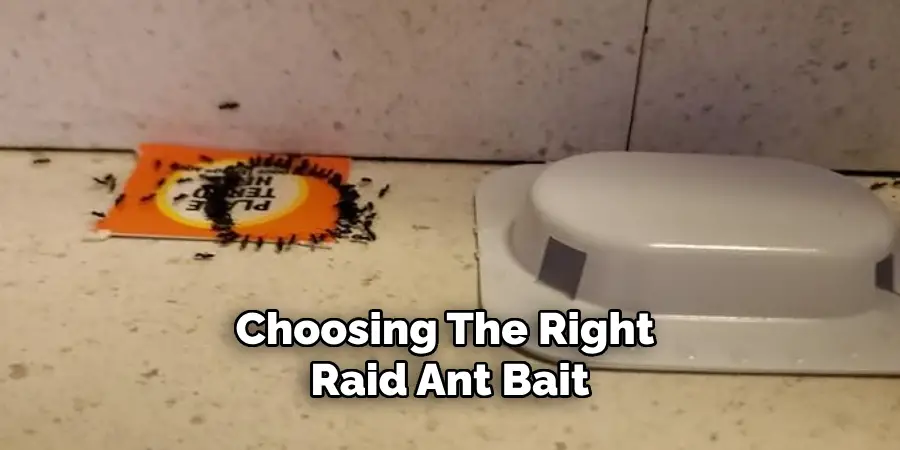
For outdoor placement, consider areas around the perimeter of your home, especially near entry points like doors, windows, and utility lines. Place bait stations in shaded areas to protect them from direct sunlight and rain, which can reduce the bait’s effectiveness. Always ensure that the bait is securely positioned to prevent movement or accidentally being disturbed.
03.Quantity and Spacing:
Using the appropriate number of bait stations and adhering to spacing guidelines are crucial for optimal ant control. As a general rule, place one bait station every 10 to 20 feet around the perimeter of your home and in areas with high ant activity.
You may need to increase the number of bait stations for severe infestations to ensure comprehensive coverage. Indoors, place bait stations near ant trails and entry points, but also distribute them throughout frequently affected rooms, such as kitchens and bathrooms. Proper spacing ensures that ants can easily access the bait, increasing the likelihood that they will transport it back to their colony.
04.Monitoring and Maintenance:
Regular monitoring and maintenance of bait stations are vital to ensuring continuous ant control. Check the bait stations every few days to determine if the bait is being consumed and whether any re-positioning is necessary. Replace bait stations as needed, especially if the bait has been fully consumed or if it appears to be contaminated or dried out.
Maintaining fresh and accessible bait will keep ants attracted to the stations, enhancing the overall effectiveness of the Raid Ant Baits. By consistently monitoring and replenishing the bait stations, you can ensure the persistent and successful eradication of the ant infestation.
Safety Tips and Precautions
Safety for Pets and Children:
When using Raid Ant Baits, it is essential to ensure the safety of pets and children by placing bait stations in inaccessible areas. To achieve this, choose locations that are out of reach, such as behind appliances, under cabinets, or in high, secure places. Utilize barriers like baby gates or pet-proof containers to restrict access to bait stations.
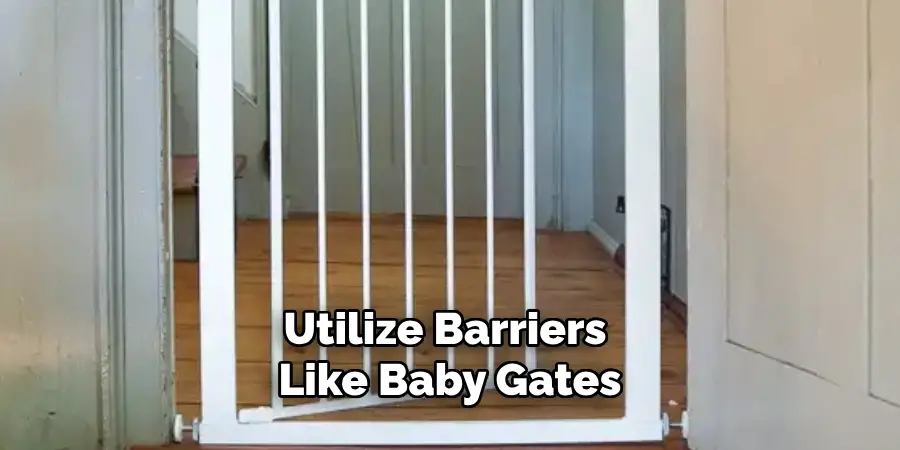
Always supervise areas where bait stations are placed and educate household members about the importance of keeping these areas undisturbed. By taking these precautions, you can effectively manage ant infestations without compromising the safety of your loved ones.
Handling and Disposal:
Proper handling and disposal of used bait stations are crucial to avoiding contamination and ensuring safety. When placing bait stations, always wear gloves to prevent skin contact with the bait. After positioning the stations, wash your hands thoroughly with soap and water.
Dispose of used bait stations by placing them in a sealed plastic bag and discarding them in an outdoor trash bin. Avoid pouring leftover bait or remnants into sinks, drains, or the environment, as this can lead to unintended contamination. Following these guidelines will help you maintain a safe and hygienic household.
Environmental Considerations:
Minimizing environmental impact is a vital aspect of responsible pest control. When using chemical baits, choose products that are specifically formulated for targeted species to reduce the risk of affecting non-target organisms. Use bait stations that contain the bait securely, preventing it from spreading into the surrounding environment.
Additionally, avoid placing bait stations near water sources, such as streams, ponds, or irrigation systems, to prevent contamination. By adhering to these best practices, you can manage ant infestations effectively while safeguarding the environment.
Observing and Evaluating Results
Signs of Activity:
Observe certain key indicators around the bait stations to determine if ants are actively taking the bait. First, check if there is a noticeable disappearance of the bait over time, which suggests that ants are consuming it and transporting it back to their colony.
Additionally, increased ant activity around the bait stations can be an encouraging sign that the ants are taking the bait. Look for trails of ants leading to and from the bait stations; this behavior indicates that the bait is effectively attracting the ants and being incorporated into their feeding habits.
Timeline for Results:
Patience is essential when using bait stations, as it may take some time to see tangible results. Generally, you can expect to observe a reduction in ant activity within a few days to a couple of weeks, depending on the size of the infestation and the type of ants involved.
Complete elimination of the colony may take several weeks, as the bait needs to be transported back to the nest and consumed by all members, including the queen. Persistently monitoring the bait stations and keeping track of any changes in ant activity will help you gauge the effectiveness of the treatment.
Adjustments and Follow-Up:
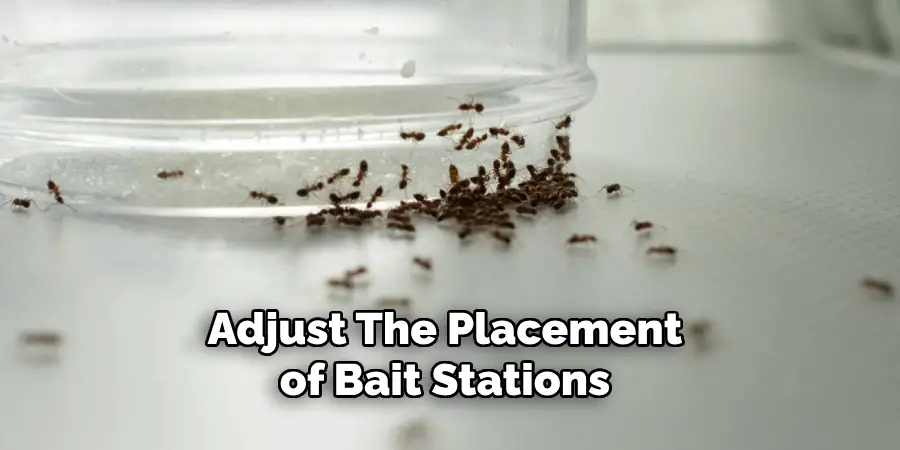
It may be necessary to adjust the placement of bait stations or add additional bait for persistent infestations. If you continue to see high levels of ant activity after two weeks, consider relocating the bait stations to different high-traffic areas or closer to nest entry points. Adding more bait stations can also help increase coverage and effectiveness.
Regularly cleaning the surrounding areas and removing alternative food sources will make the bait stations more appealing to the ants. Consistent follow-up and adjustments will help ensure comprehensive control of the ant infestation and contribute to long-term prevention.
Additional Tips and Alternatives
Complementary Measures:
In addition to using Raid Ant Baits, it’s beneficial to implement other ant control techniques to enhance the overall effectiveness. Start by sealing potential entry points around your home, including cracks in walls, gaps around windows and doors, and openings around plumbing and electrical outlets.
This helps to prevent new ants from entering your space. Employ natural repellents such as vinegar, lemon juice, or essential oils like peppermint or tea tree oil along suspected ant trails. These substances can disrupt the pheromone trails that ants follow, deterring them from your home. Regular cleaning and removing food and water sources can also significantly reduce ant activity.
Alternatives to Raid Ant Baits:
Several other ant bait brands are effective for those seeking alternatives to Raid Ant Baits, such as Terro, Amdro, and Advion. These products often use different active ingredients that may suit specific ant species.
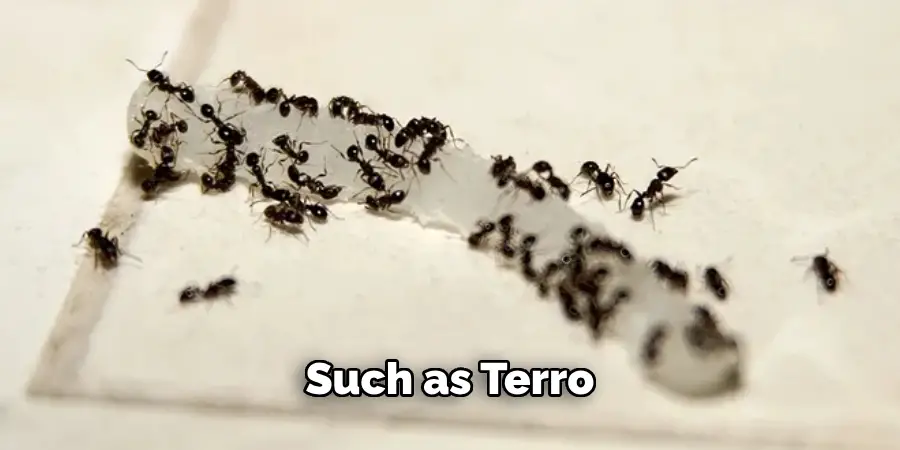
Non-chemical alternatives are also available for those who prefer natural solutions. Consider using diatomaceous earth, which is a natural powder that dehy+drates and kills ants upon contact. Additionally, borax mixed with sugar water can serve as a homemade bait that entices ants while being safer for use around pets and children. Employing a combination of these methods can provide a comprehensive ant control strategy.
Conclusion
Using Raid Ant Baits offers an effective and straightforward solution for controlling ant infestations in your home. Following the guidelines, you can maximize the baits’ efficiency and achieve long-lasting results. Remember, when learning how to use Raid Ant Baits, patience is vital, as it might take a few weeks to see a significant reduction in ant activity.
Ensuring proper placement, handling, and disposal of the bait stations, along with regular monitoring and necessary adjustments, will enhance the effectiveness of the treatment. Combining bait stations with complementary measures and alternative solutions can also contribute to a comprehensive ant control strategy.
Maintaining a pest-free environment requires ongoing vigilance and preventive measures. Regularly inspect and clean your home, seal entry points, and remove attractive food and water sources. You can keep ants at bay and enjoy a more comfortable, hygienic living space by staying proactive.
About
Angela is the chief editor of Indoorense. She began her career as an interior designer before applying her strategic and creative passion to lifestyle and home.
She has close to 15 years of experience in creative writing and online content strategy for housekeeping and cleaning,home decorations as well as other efforts.
She loves her job and has the privilege of working with an extraordinary team. She lives with her husband, two sons, and daughter in Petersburg. When she’s not busy working she spent time with her family.

